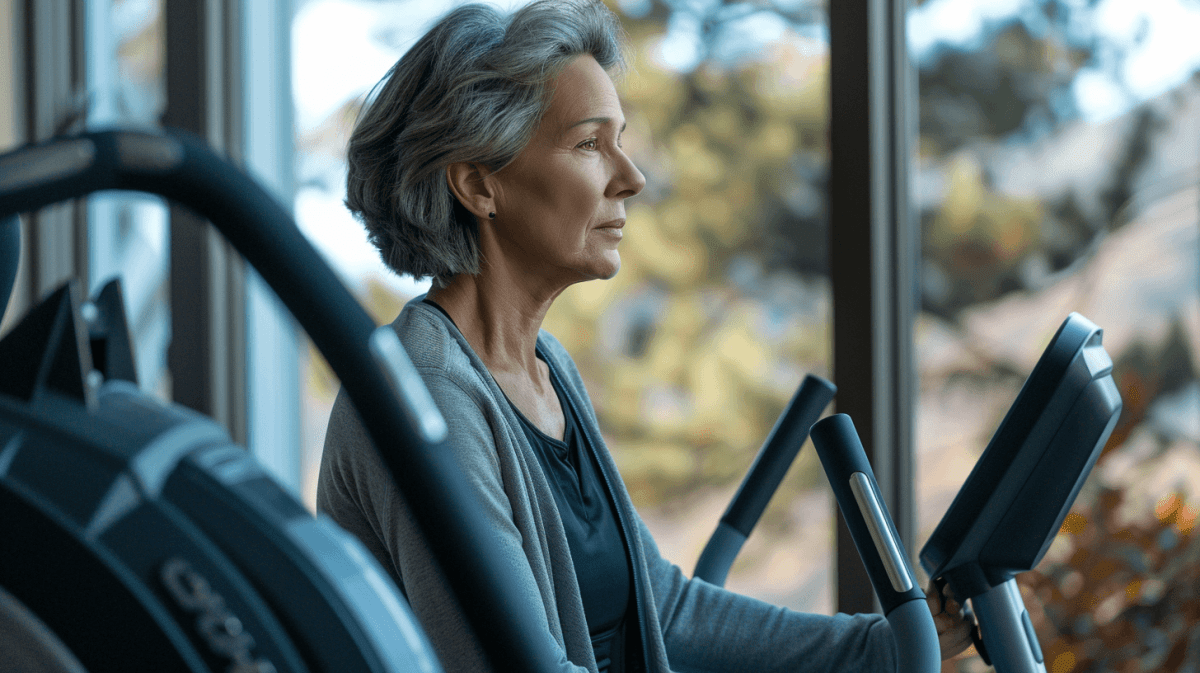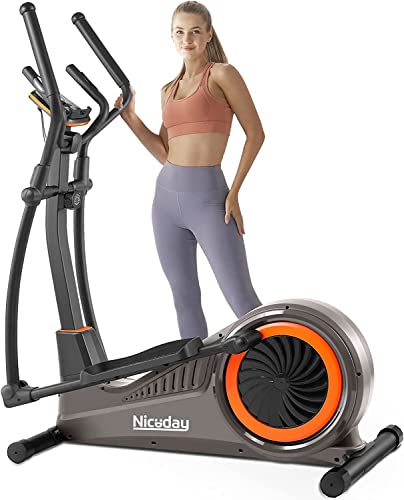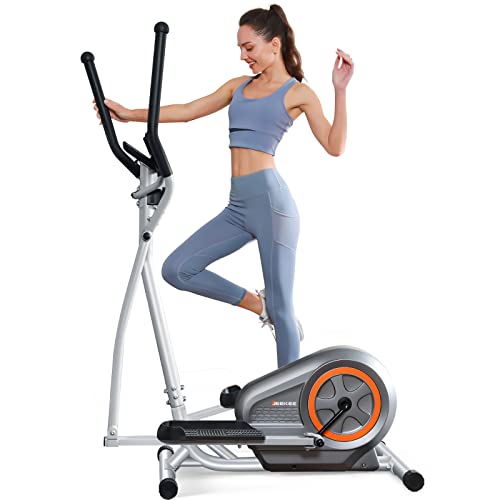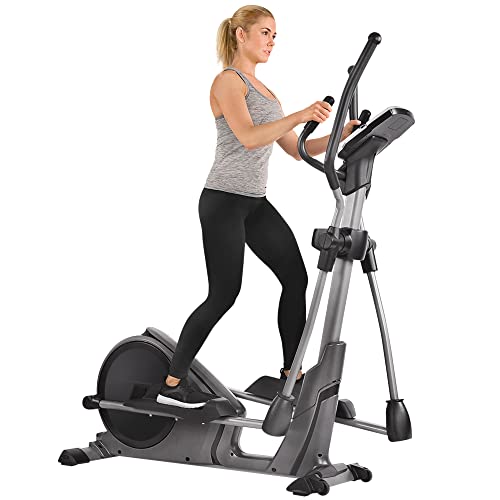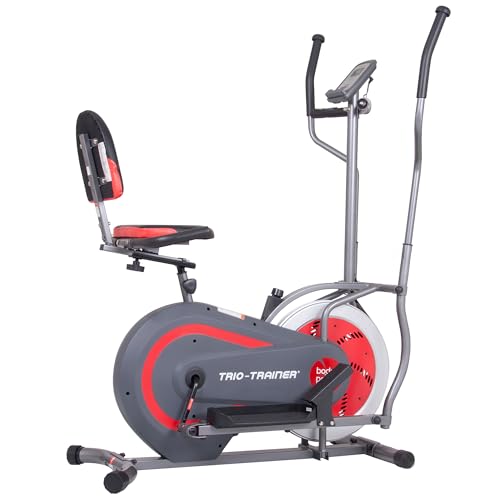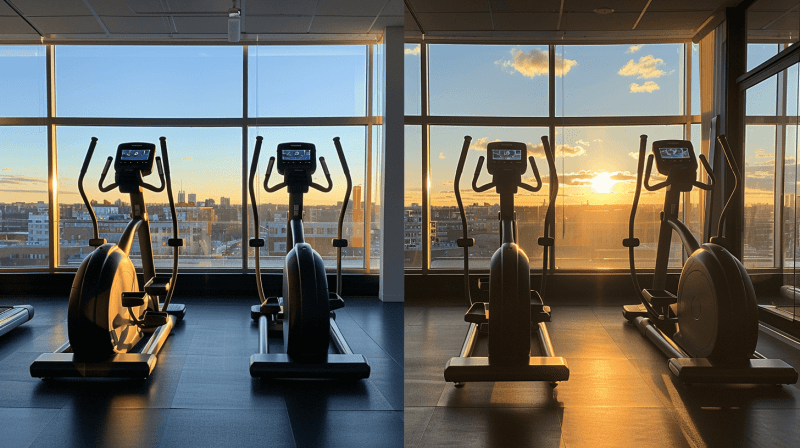Like a gentle wave carrying a surfer to shore, the elliptical machine can guide you through your fitness journey while being mindful of your back pain. You've probably noticed how traditional cardio exercises often leave you wincing, but the elliptical offers a unique blend of movement that won't jar your spine. While it's a promising option for those dealing with back issues, you'll need to understand both its benefits and limitations before making it your go-to workout choice. The key lies in proper form, appropriate resistance levels, and knowing how your specific back condition responds to this type of motion.
Key Takeaways
-
Elliptical machines provide low-impact cardiovascular exercise that minimizes stress on the spine while maintaining proper posture alignment.
-
The natural forward-backward motion of elliptical training creates less strain on the back compared to high-impact exercises.
-
Users with back conditions can easily modify resistance and incline levels to accommodate their comfort and pain threshold.
-
Regular elliptical training strengthens core muscles and promotes proper posture, which can help reduce chronic back pain.
-
Professional guidance ensures correct form and technique, making elliptical training a safe exercise option for back pain sufferers.
Understanding Back Pain During Exercise
If you've had back surgery or have conditions like spondylolisthesis, you can modify your elliptical workout by adjusting the resistance and incline levels to better accommodate your specific condition. The low-impact exercise provided by elliptical machines helps protect joints and promote good posture during workouts. For those recovering from injuries, proper technique is essential to avoid shifting weight side-to-side during the movement.
Benefits of Elliptical Training
For those seeking a gentler way to exercise with back pain, elliptical training offers several compelling advantages. Your back is supported throughout the workout while you're still able to achieve an effective cardiovascular session. The machine's natural forward-backward motion creates less strain on your spine compared to traditional up-down exercises. High-intensity workouts can boost stamina levels in just two weeks with regular practice.
When you're looking to maintain fitness while protecting your joints, the elliptical stands out for these key benefits:
- Low-impact cardiovascular exercise that reduces stress on your knees, hips, and back
- Upper and lower body engagement through coordinated arm and leg movements
- Controlled motion that supports proper posture during the entire workout
The elliptical's design makes it particularly valuable for physical rehabilitation and recovery. You'll find that proper technique maximizes these benefits - focus on engaging your quadriceps and maintaining an upright posture while coordinating your arm and leg movements. This full-body approach guarantees you're getting an effective workout while protecting your back from unnecessary strain. Whether you're managing chronic back pain or recovering from an injury, the elliptical provides a safe and effective exercise option that won't compromise your spinal health. Improved balance and coordination naturally follows as you master the coordinated movements required for effective elliptical training.
Proper Form and Technique
If you're new to using the elliptical or have existing back concerns, don't hesitate to seek professional guidance. A physical therapist or certified trainer can evaluate your form and provide personalized recommendations for your specific situation. They'll help guarantee you're using the machine correctly and make any necessary adjustments to support your back health. The low-impact cardio machine provides a gentler workout option for those managing back pain while still delivering effective results. Maintaining proper posture alignment is crucial when using the elliptical to prevent strain on your back muscles.
Alternative Low-Impact Exercise Options
While the elliptical provides excellent low-impact exercise, you'll find several other effective alternatives that can help manage back pain. When you're looking to diversify your workout routine beyond the elliptical trainer, consider these proven options that offer similar cardiovascular benefits while protecting your spine.
Swimming stands out as one of the most effective alternatives, as the water's buoyancy supports your body weight and reduces spinal compression. You'll get an excellent cardiovascular exercise while the water helps minimize stress on your back muscles and joints.
Ergonomic machine designs make both ellipticals and stationary bikes excellent choices for seniors with joint concerns.
If you prefer land-based exercises, here are three effective options:
- Recumbent bike workouts that provide vital back support while allowing you to maintain consistent cardiovascular activity
- Controlled weight machine exercises that strengthen supporting muscles without putting excess strain on your spine
- Gentle yoga or stretching routines that improve flexibility and help release tension in your back muscles
You can also incorporate bodyweight exercises like modified squats and wall push-ups to build core strength, which is essential for back health. These exercises complement your existing routine while providing varied movement patterns that can enhance overall back support.
Comparing Different Exercise Machines
Looking across the range of exercise machines, you'll find distinct advantages and limitations when it comes to managing back pain. When evaluating exercise equipment, it's pivotal to understand how each option impacts your spine and joints differently.
The Elliptical Machine stands out as a leading choice for back pain sufferers. You'll experience a low-impact workout that protects your joints while engaging multiple muscle groups, including your back, arms, and chest. Unlike other cardio equipment, the elliptical allows you to maintain proper posture throughout your workout, reducing the risk of aggravating existing back conditions.
In contrast, treadmills can pose challenges for those with back issues. While they're effective for cardiovascular fitness, the repetitive impact can strain your spine, especially when you're tired and your form begins to suffer. Recumbent bikes offer another alternative, providing excellent back support through their ergonomic design.
When choosing between these options, consider that the elliptical combines the benefits of low-impact exercise with full-body engagement. You'll get comparable calorie-burning benefits to treadmill use, but with noticeably less stress on your back and joints.
Risk Factors to Consider
The safe use of an elliptical machine requires careful consideration of specific risk factors that could impact your back health. When you're dealing with lower back pain, it's paramount to understand potential complications before starting your exercise routine.
Before using an elliptical, make sure you evaluate these critical factors:
- Posture alignment - Keep your spine neutral and avoid leaning forward, as improper form can aggravate existing back conditions
- Resistance settings - Start with low resistance and gradually increase it; too much resistance too soon can strain your back muscles
- Exercise duration - Begin with short sessions (10-15 minutes) and slowly build up your endurance
You'll need to pay attention to your body's signals during workouts. If you experience increased discomfort or sharp pain, stop immediately and consult your healthcare provider. When selecting enough resistance, choose a level that allows you to maintain proper form throughout your session. It's imperative to make sure your shoes provide adequate support and that the machine's handles are at the right height for your body type, preventing unnecessary strain on your back muscles.
Recovery and Rehabilitation Guidelines
Successful rehabilitation using an elliptical machine requires a systematic approach tailored to your back condition. You'll need to work closely with your healthcare provider or physical therapist to develop a workout routine that aligns with your recovery goals and specific back issues.
Start with these key rehabilitation guidelines:
-
Maintain proper form by keeping your spine neutral and shoulders back. You'll want to focus on an upright posture throughout your workout to prevent additional strain on your back.
-
Begin with low resistance and short durations (10-15 minutes), gradually increasing as your strength improves. The elliptical can be your best exercise choice for rebuilding endurance while protecting your spine.
-
Monitor your body's response after each session. If you experience increased pain or discomfort, adjust your routine accordingly.
For ideal overall health benefits during recovery:
- Schedule regular check-ins with your spine specialist
- Document your progress and any pain patterns
- Modify resistance and duration based on how you feel each day
- Complement elliptical training with prescribed stretching and strengthening exercises
Remember that successful rehabilitation depends on consistency and patience while following your healthcare provider's recommendations.
Safe Workout Intensity Levels
Finding the right workout intensity on an elliptical machine requires careful attention when you're dealing with back pain. The machine takes stress off your low back when used correctly, but maintaining appropriate resistance and speed levels is essential for preventing discomfort.
For optimal back protection, consider these key intensity guidelines:
- Start with 10-15 minutes at low resistance (levels 1-3) to allow your hips and back to adjust to the movement
- Keep your pace moderate, around 120-140 strides per minute, focusing on smooth, controlled motions
- Increase workout duration and resistance by no more than 10% each week to prevent strain
You'll want to begin with shorter sessions at lower intensities, gradually building up your endurance as your back adapts. If you experience any discomfort, reduce your intensity immediately or stop the workout. Working with a physical therapist can help determine your ideal intensity range based on your specific condition. Consider alternating your elliptical workouts with other low-impact activities to create a balanced exercise routine that supports your back health while maintaining fitness goals.
Building Core Strength Support
You can enhance your core strength by incorporating specific exercises into your routine. Try adding planks and bridges before or after your elliptical workout. These targeted movements will build the strength you need to maintain proper form while using the machine.
The best part is that the elliptical's low-impact nature complements these core-strengthening exercises perfectly, allowing you to work on both your cardiovascular system and core muscles without aggravating existing back pain.
Frequently Asked Questions
What Exercise Machine Is Good for Lower Back Pain?
You'll find relief with recumbent bikes for low impact cardio exercise. Add weight machines for muscle strengthening exercises. Both options support improved posture while protecting your spine during workouts.
What Are the Disadvantages of Elliptical?
Like a rusty door hinge, your joints can wear unevenly on an elliptical. You'll face potential muscle imbalances, poor posture development, and limited joint impact that won't effectively build bone density over time.
What Type of Exercise Is Best for Lower Back Pain?
You'll benefit most from combining core strengthening exercises, gentle stretching routines, and physical therapy options. Swimming, water-based workouts, and low-impact activities like recumbent bikes are ideal for managing lower back pain.
Who Should Not Use an Elliptical?
You shouldn't use an elliptical if you're elderly, have balance issues, are extensively overweight, recovering from surgery, or are a rehabilitation patient. Those with joint problems or back conditions should also avoid it.
Conclusion
The elliptical machine offers you a reliable path to managing back discomfort while maintaining your fitness goals. When you're mindful of proper form and technique, you'll find it's gentler on your spine than many other cardio options. Remember to start gradually, listen to your body's signals, and consult your healthcare provider about specific modifications for your condition. With consistent, proper use, the elliptical can become your go-to tool for back-friendly cardiovascular exercise.
